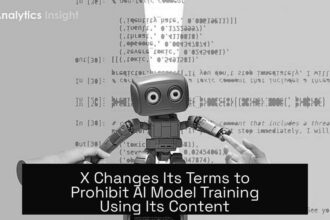Table of Contents
ToggleMeta’s Plan to Fully Automate Advertising with AI by 2026
Meta aims to enable full automation of ad creation and targeting using artificial intelligence by the end of 2026. This move intends to transform how brands develop and deliver advertisements across Meta’s social platforms.
Current AI Capabilities in Meta Advertising
Meta’s apps, including Facebook and Instagram, serve 3.43 billion active users globally. Today, its AI tools assist advertisers by generating personalized ad variations. These tools adjust image backgrounds and video elements automatically to enhance ad appeal.
How Full AI Automation Will Work
Brands will only need to provide basic inputs like a product image and budget. Meta’s AI will then create complete ads—covering images, videos, and text. Additionally, it will handle user targeting and budget allocation suggestions. This approach reduces manual effort for advertisers.
Real-Time Personalization Through AI
Meta plans to offer advertisers the ability to show multiple ad versions in real time. The AI will customize ads based on user-specific factors such as geolocation, improving relevance and engagement.
Business Impact and Industry Context
- Advertising forms Meta’s majority revenue stream.
- The company did not immediately comment on this automation plan.
- Other platforms like Snap, Pinterest, and Reddit also invest in AI tools for advertising.
- Tech giants such as Google and OpenAI release AI content generation tools, though brand safety and control concerns limit adoption.
Mark Zuckerberg’s Vision
CEO Mark Zuckerberg highlights the necessity for AI to provide measurable advertising outcomes at scale. Meta aims to build a comprehensive AI platform enabling businesses to set objectives, allocate budgets, and automate logistics seamlessly.
Key Takeaways
- Meta targets full AI-driven ad automation by 2026.
- Current AI tools support ad personalization and creative adjustments.
- Automation will cover ad creation, targeting, and budget management.
- Real-time AI customization will adapt ads to user factors.
- Competitive AI investments are rising across social media and tech firms.
- Zuckerberg emphasizes results-driven AI platforms for advertisers.
Meta Aims to Fully Automate Advertising with AI by 2026, WSJ Reports
Meta wants to hand over the reins of ad creation and targeting entirely to artificial intelligence by 2026. That bold claim, reported by the Wall Street Journal, shows how this social media giant plans to push AI beyond just helping with ads—Meta aims to automate the whole process. But what does this really mean for advertisers, users, and the future of digital marketing? Let’s dive in.
Meta Platforms currently power Facebook, Instagram, and other apps that boast a staggering 3.43 billion unique active users worldwide. It already employs AI in advertising—but only as a helper. For example, its tools can personalise ad variations, tweak image backgrounds, and even adjust videos automatically. These small tech miracles make advertising easier and potentially more effective for brands. But Meta thinks it can do way more.
How Will This AI-Driven Automation Work?
Imagine a brand marketing manager simply uploading a product image and setting a budget. Meta’s AI would then generate the ad, including images, video, and text. Beyond just creating ads, the AI would suggest who to target on Facebook and Instagram, and how to allocate the budget smartly. No hiring multiple creative teams or ad strategists; AI does the heavy lifting.
If this sounds like sci-fi, remember AI’s progress in recent years has been rapid. This move could redefine how businesses large and small handle advertising. But what about personalisation? Meta plans to let advertisers personalise ads in real-time using AI. This means one user in New York might see a slightly different version of an ad than someone in Paris, based on location and user data.
Why Is Meta Betting on Full Automation?
Meta gets most of its revenue from ad sales. The bigger, smarter, and more efficient their ad platform, the better for business. By automating ad creation and targeting, Meta hopes to attract more advertisers by saving them time and money. CEO Mark Zuckerberg emphasizes that advertisers need AI products that deliver measurable results at scale. That means showing clear benefits, like increased sales or engagement, to justify investment.
Meta also wants to create an “AI one-stop shop” where businesses can set their goals, allocate budgets, and basically let the AI handle all the messy logistics. This kind of end-to-end automation is ambitious but fits with Zuckerberg’s vision for the future of digital advertising.
Challenges Along the Way
Sounds great—but there are hurdles. Many marketers worry about brand safety, meaning they don’t want their ads appearing next to inappropriate content or in damaging contexts. Others fear losing creative control when AI generates ads on autopilot. Quality concerns also exist: Will AI maintain the human touch that makes ads compelling, or produce bland content?
Other companies are racing to claim their place in AI advertising. Social media firms like Snap, Pinterest, and Reddit invest heavily in AI tools to lure advertisers. Meanwhile, tech giants such as Google and OpenAI release video and image generation tools. Yet many marketers hesitate to adopt these fully automated options widely, wary about control and quality.
Is This the Future for Every Advertiser?
Brands with limited budgets and small marketing teams will likely celebrate AI automation. For them, automating ad creation and targeting reduces expertise needed and streamlines campaigns. But large brands with complex needs might remain cautious, blending AI tools with human oversight for the foreseeable future.
One fascinating aspect is the potential for hyper-personalisation. Would you like to see an ad that reflects your current city, interests, or even the weather? Meta’s AI intends to make that possible in real time. This could revolutionize user experience by turning generic ads into personally relevant messages.
Practical Tips for Advertisers Preparing for the 2026 Shift
- Start experimenting with Meta’s existing AI tools. Use personalised ad variations and automated video adjustments to get comfortable with AI’s capabilities.
- Gather quality data. AI needs rich, well-organized data to create effective targeting and personalisation.
- Focus on clear goals. The upcoming AI system will require advertisers to set firm objectives and budgets upfront.
- Monitor and control. Keep a close eye on campaigns and be ready to intervene if AI-generated content strays from your brand’s voice or standards.
Final Thoughts
The Wall Street Journal’s report about Meta’s goal to fully automate advertising with AI by 2026 signals a seismic shift. Brands will soon be able to create, target, and optimize ads with minimal human input—all in one platform. This could make advertising more efficient but raises questions about creative control and quality.
Meta’s ambition to build an AI-driven “one-stop shop” reflects the changing landscape where technology and marketing merge. With billions of users and intense competition from other platforms investing in AI, Meta’s bet is clear: AI will be the future of advertising. Are you ready for a world where your next ad might be entirely crafted by a robot?
“Advertisers need AI products that deliver measurable results at scale.” – Mark Zuckerberg
If you manage ads on Meta’s platforms, now is the time to explore AI tools, understand their impact, and prepare for automation’s arrival. Being ahead of the curve might just be the key to thriving in the fast-evolving digital ad ecosystem.
What does Meta’s plan to fully automate advertising by 2026 involve?
Meta aims to let brands create and target ads using AI tools. Brands provide inputs like product images and budgets, and the AI handles ad creation, targeting, and budget suggestions across platforms like Instagram and Facebook.
How does Meta’s AI personalize ads for users?
The AI generates different versions of the same ad in real time. It adapts based on factors like the user’s location, allowing each person to see ads that better match their profile.
What current AI features does Meta offer for advertising?
Meta uses AI to create personalized ad variations, adjust image backgrounds, and optimize video ads automatically. These features help advertisers tailor content to their audiences more efficiently.
How does Meta’s AI advertising strategy compare to other companies?
Companies like Snap, Pinterest, and Reddit also invest in AI tools for ads. Google and OpenAI offer AI tools too, but some marketers hesitate due to concerns over brand safety and creative control.
What is Mark Zuckerberg’s vision for AI-driven advertising?
He wants AI products that deliver clear, measurable results at scale. Meta plans to build a platform where businesses can set goals and budgets, then rely on AI to manage the ad campaigns automatically.





